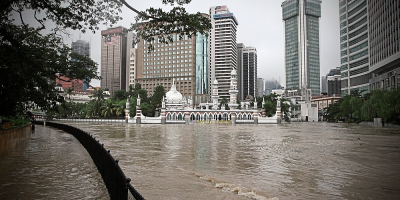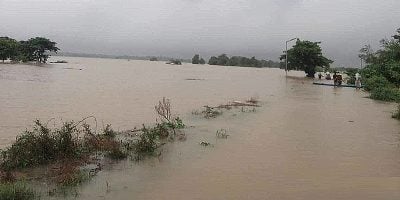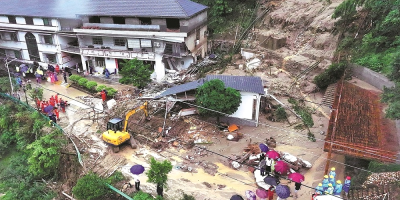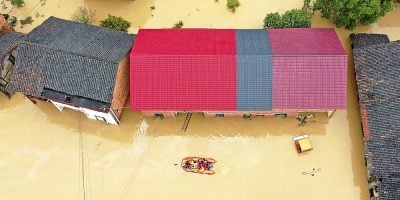
The December floods are an annual event that goes back as far as metalogical records and memories go.
Last years, floods were described “as once in a hundred years floods,” but this year seems to be exceeding last year.
These events can’t be blamed upon climate change as an excuse for unpreparedness.
Flooding every year is very predictable, and records show there are sometimes extreme years occurring every decade or two.
Once in a decade, the floods are even more extreme than the average, leading to horrific consequences.
Continuous rains, dams along rivers nearly at their capacities, logged or developed hillsides, poorly planned and constructed infrastructure, and inadequate drainage systems lead to disasters.
This is evidenced by the landslide last week at Batang Kali, Selangor, tragedy claiming at least 24 lives, with many still missing.
The Bating Kali incident exposes bureaucratic inertia, the failure to check corporation compliance with the laws and zoning regulations, and other illegal activities.
Land is being used in areas that are susceptible to landslides during heavy rains, while illegal land use, including logging, destroys local ecosystems that stabilize ground and soil, preventing mudslides.
The only positive thing that can be said about the Batang Kali tragedy is that Malaysian search and rescue teams have shown tremendous bravery in their rescue of the mudslide victims at the risk of their own safety.
Heavy rain is expected to continue until December 24. There is every probability that Perlis and Kedah will join Kelantan, Terengganu, Pahang, Johor and Perak as states hit by floods.
The number of people evacuated from their homes now extends past 12,000 and is expected to continue rising.
Many houses will suffer extensive damage as the raging waters hit those adjacent to floodways.
Tragically in Terengganu, a two-year-old girl fell out of her house door and was instantly swept away and drowned.
Floodwaters engulf many facilities like hospitals and supermarkets rendering them useless during the emergency.
Those housed at the many evacuation centers will return to their homes next week to find extensive water and structural damage to their homes, and their belongings water damaged beyond the ability to salvage.
These areas will become health risks, as waterborne diseases like cholera, typhoid and hepatitis could emerge in outbreaks.
Waterborne vermin like mosquitoes and snakes hiding in flooded homes await those returning to make their lives once again.
This year’s floods are occurring from long non-stop rains caused by low pressures from the northeast monsoon under the influence of La Niña effect, causing heavy rains.
There is no “big picture” of flood potential across the peninsula, with localized flood mitigation infrastructure built upon an ad hoc basis rather than any expert derived plan.
Malaysia is a casualty of the lack of flood mitigation studies, where both rural and urban topographies haven’t been studied thoroughly.
Consequently, there is no “big picture” of flood potential across the peninsula, with localized flood mitigation infrastructure built upon an ad hoc basis rather than any expert derived plan.
This has been exacerbated by logging, urban and industrial development, road building and agricultural activities, unabated for decades.
Oil palm plantations just don’t have the ground absorbing effects that natural jungle has. Unfortunately, the 12th Malaysia Plan has little money earmarked for flood mitigation which has been bypassed for other infrastructure projects that are commercially beneficial.
Unfortunately, Malaysia’s climate change plan is full of aspirations for a carbon-neutral economy by 2050, and the introduction of electric vehicles (EV), but terribly silent on the issue of flood mitigation.
Flooding affects the daily lives of hundreds of thousands of Malaysians each year.
Many climate activists are quick to connect causality of the floods to climate change, but not offer much in solutions.
Most agricultural, urban, industrial and infrastructural projects lack the environmental impact studies necessary to minimize the impact of flooding.
In addition, as land matters are the responsibility of states and not the federal government, there is no uniform approach to waterflow management.
Poor waterflow management is a prime reason for the generally poor soil quality on agricultural land, leading to lower yields than would be normally possible.
Thus, the responsibility for issues of flood mitigation cut across the ministries of rural development, infrastructure, agriculture and the environment.
Thus, in Malaysia there is no one ministry directly responsible, leaving this crisis that is reoccurring every year in an undefined responsibility ambiguity.
This lapse of focus has been going on for decades.
This is what reform should be about. It’s an opportunity for the new government to focus on real problems that affect Malaysians.
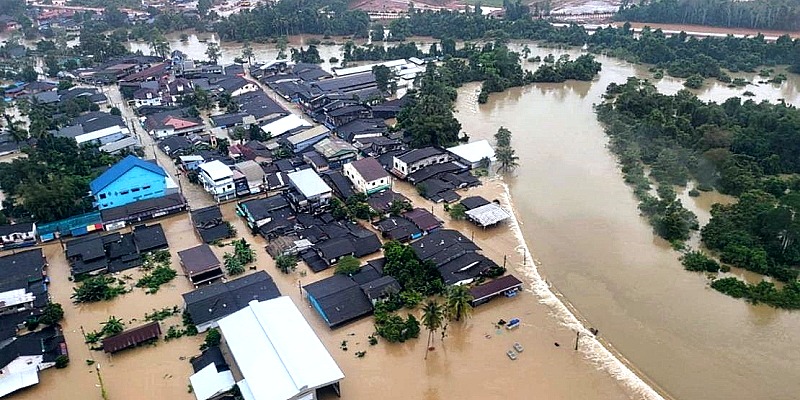
(Murray Hunter has been involved in Asia-Pacific business for the last 40 years as an entrepreneur, consultant, academic and researcher. He was an associate professor at Universiti Malaysia Perlis.)
ADVERTISEMENT
ADVERTISEMENT







